|
|
|
|
German Main Battle Tank Leopard 1 A3/A4
Meng, 1/35 scale
Reviewed by Brett Green
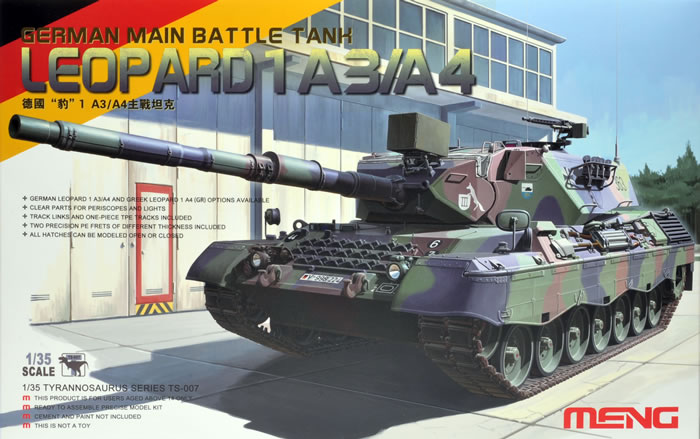
Summary
| Stock Number and Description | Meng Kit No.TS007 - German Main Battle Tank Leopard 1 A3/A4 |
| Scale: | 1/35 |
| Media and Contents: | 283 parts in dark green plastic; 180 parts in red-brown plastic; ten clear parts; ten parts on two photo-etched frets; two lengths of flexible vinyl tracks; 20 polythene caps and a length of string. |
| Price: | USD$41.99 plus shipping available online from Lucky Model and retailers worldwide |
| Review Type: | First Look |
| Advantages: | High level of detail; convincing surface textures; excellent mouding quality; useful options, alternative separate link or flexible full length tracks. |
| Disadvantages: | |
| Recommendation: | Meng has delivered another very impressive model with their Leopard 1 A3/A4 kit. This is a worthy replica of this landmark tank, and it is vastly superior to its 1970’s predecessors. Highly Recommended. |
Introduction
The Leopard 1 is a main battle tank designed and produced in West Germany that first entered service in 1965.
The Leopard quickly became a standard of European forces, and eventually served as the main battle tank in over a dozen countries worldwide.
6,485 Leopard tanks have been built in total, of which 4,744 were battle tanks and 1741 were utility and anti-aircraft variants.
The original Leopard 1, the Leopard 1 A1 and the Leopard 1 A2 were all fitted with cast turrets.
The Leopard 1 A3 was fitted with a new welded turret, which was equipped with new armour consisting of two spaced steel plates with a plastic filling, and a wedge-shaped gun mantlet.
The Leopard 1 A4 formed the sixth batch of 250 vehicles, delivery starting in 1974. The 1A4 was externally similar to the 1A3, but included a new computerised fire control system and the new EMES 12A1 sighting system to aim it. In addition the commander was provided with his own independent night sighting system, the PERI R12. The new equipment used up space and the ammunition load was reduced to 55 rounds, of which 42 were stored in the magazine to the left of the driver.*
Both Italeri and Tamiya released 1/35 scale Leopard 1 models during the 1970s. Of these, Italeri’s were the best. Italeri released Leopard 1 A2, A4 and A5 variants, Although relatively simple, they remain decent kits even today. Revell has reboxed the Italeri kit too.
F i r s t L o o k
Meng Model has now brought the Leopard 1 into the 21st Century with their brand new 1/35 scale 1 A3/A4 kit.
Meng’s 1:35 scale Leopard 1 A3/A4 comprises 283 parts in dark green plastic, 180 parts in red-brown plastic, ten clear parts, ten parts on two photo-etched frets, two lengths of flexible vinyl tracks, 20 polythene caps and a length of string.
Moulding quality is excellent throughout.
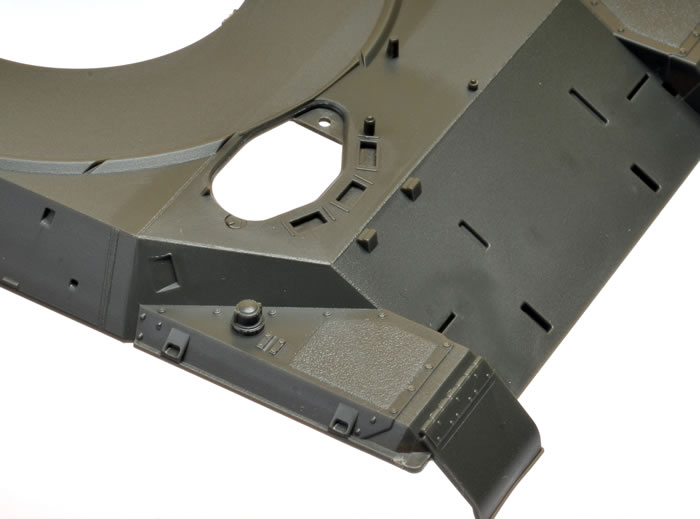
The lower and upper hulls are moulded in one part each. The suspension is supported by workable plastic torsion bars, while the wheels are conventional affairs with inner and outer halves, attached to the torsion bars using poly caps. I think this is a much neater solution than separate vinyl tyres and tiny attachment pins.
Two choices are offered for the tracks – flexible vinyl or individual links. The vinyl tracks look really good, with no ejector marks or imperfections anywhere on the inner or outer surfaces.

The brown individual links are supplied as one part each and may be slightly better detailed than the vinyl version, but they do suffer from two small, shallow ejector circles on the inner face of each link. The ejector circles will be tricky and tedious to clean up, but if you just leave them in place they’ll be almost impossible to see on the finished vehicle.
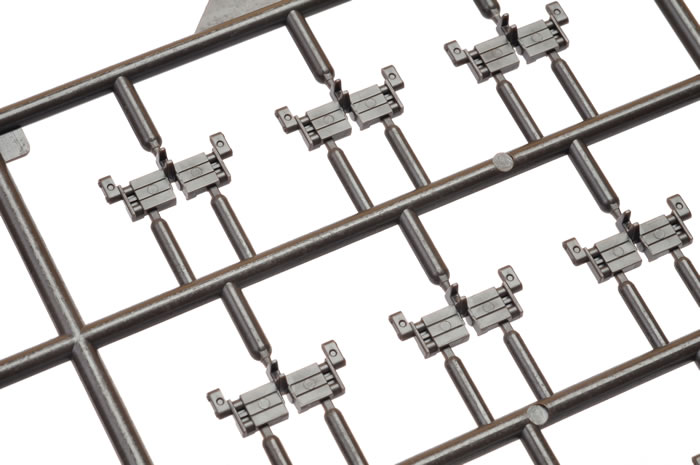
Plenty of detail is provided for the upper hull, including moulded weld beads and non-skid surfaces, optional radiator vents (circular or standard grille), photo-etched grilles and track cleat rack.
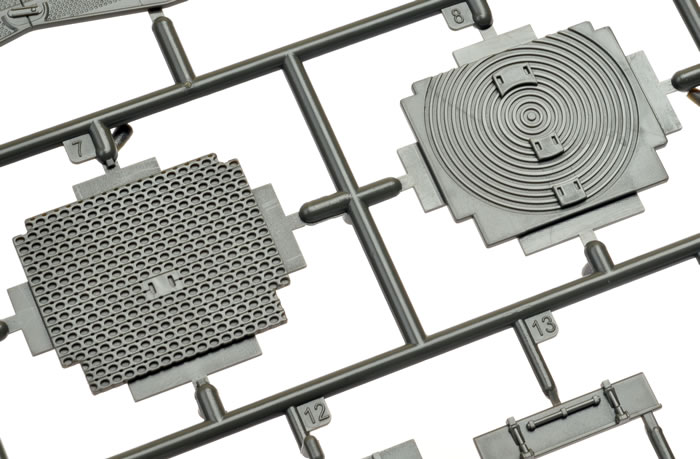

The pioneer tools are worthy of mention. They are moulded with bolt head and clasp detail that would rival many multi-part photo-etched assemblies.
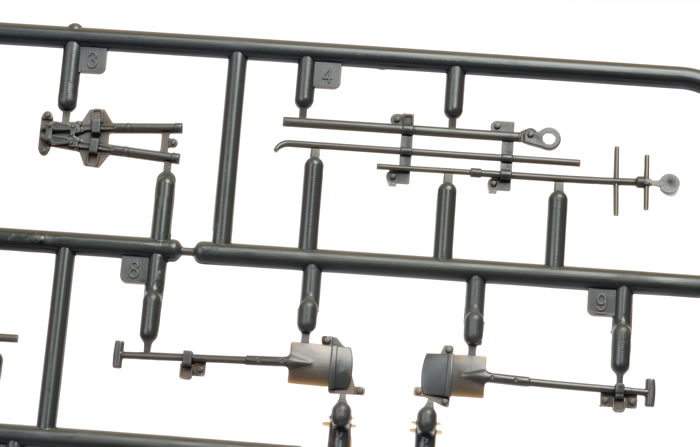
Options are also included for the sighting system and other turret details. The cage guard for the PZB200 sighting system is an impressive piece of moulding.

Alternative parts are supplied to pose the searchlight housing open or closed. The light and a clear lens are included too.
The main gun is a three-piece plastic affair split along the centreline and with a separate rifled muzzle. The drape and detail moulded on the flexible mantlet cover is fantastic.
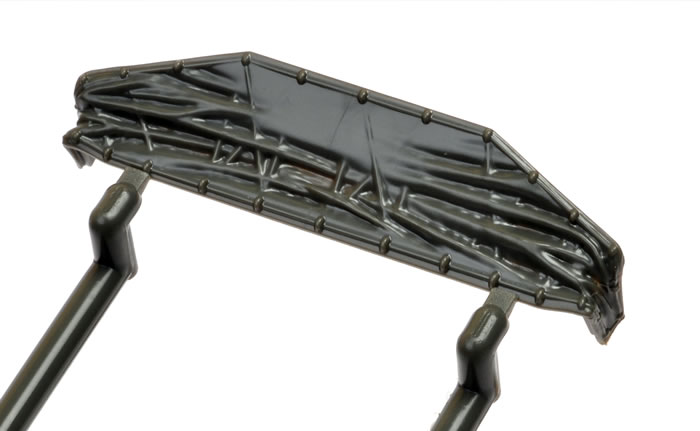
All the hatches are separate and may be posed open or closed.
Clear parts are provided for the various scopes and headlights.
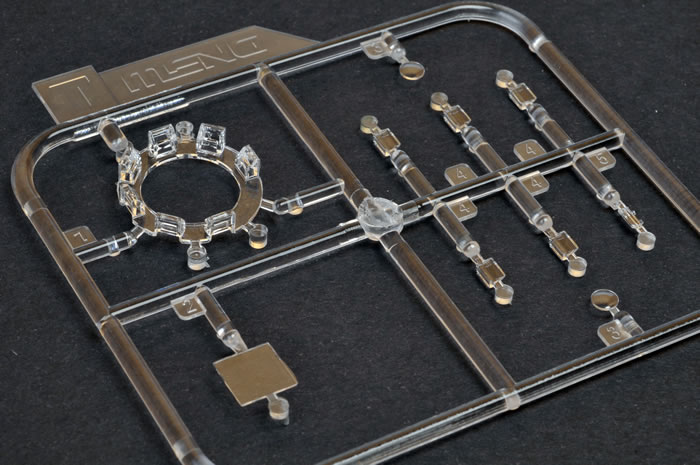
Markings are provided for four vehicles – three German and one Greek. They are printed by Cartograf.
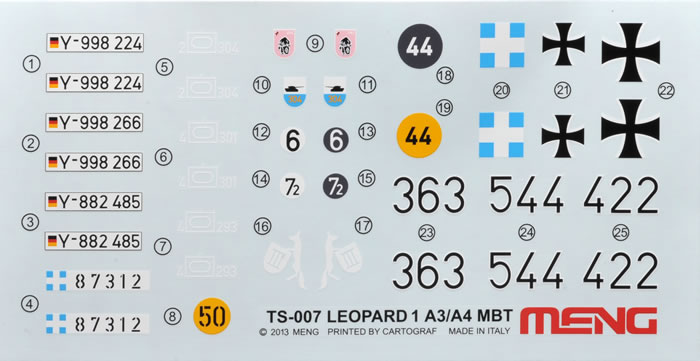
The decals are in perfect register, the colours look good and they are flat in finish.
C o n c l u s i o n
Meng has delivered another very impressive model with their Leopard 1 A3/A4 kit. This is a worthy replica of this landmark tank, and it is vastly superior to its 1970’s predecessors.
The options for the different gun sights, radiator vents and other details are welcome. The inclusion of alternative tracks is a great idea, catering to modellers who might prefer either individual link, or the ease of full-length flexible tracks. Detail is excellent but this has been delivered without a huge number of parts or unnecessary complexity.
This one looks like Goldilocks’ choice – just right!
Highly Recommended.
* History adapted from Wikipedia http://en.wikipedia.org/wiki/Leopard_1
Thanks to Meng Models for the sample www.meng-model.com
Text and Images by Brett Green
Page Created 24 November, 2013
Page Last Updated
24 November, 2013




























